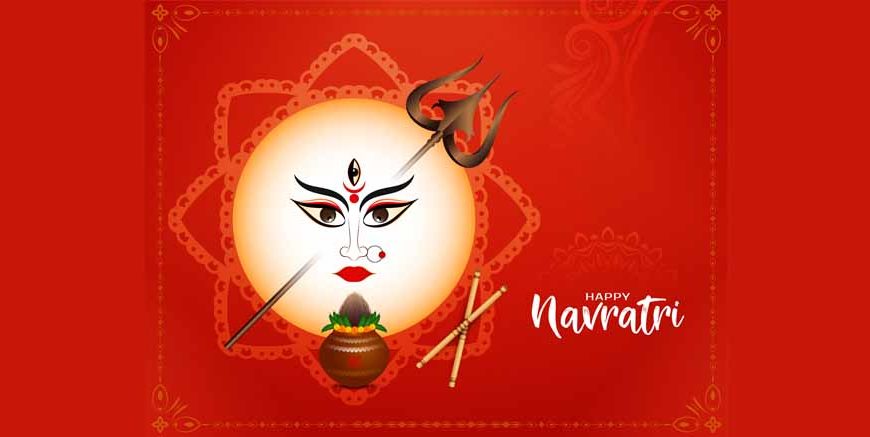Navratri, celebrated with grandeur throughout India, is a time for spiritual awakening and a fasting season, which is connected with both devotion and food traditions. This nine-day celebration, which honours Goddess Durga and her nine avatars, is replete with vivid festivities as well as the Navratri fasting tradition, which holds deep religious and health importance for many people.
Here, we look at the rules for Navratri fasting, the benefits it provides, and some delightful foods to make your fasting experience more joyful and gratifying. Whether you’re seasoned faster or a novice curious about the process, understanding these aspects can help you observe these sacred days with devotion and health consciousness.
Navratri fasting rules
Though different people follow different ways to observe fasts during these nine days there have been some general principles which have stood against time. These rules aim at keeping the mind & body pure while performing spiritual practices. So here are some commonly followed guidelines:
Grains and Pulses Should Be Avoided: Avoid ordinary grains such as wheat and rice, as well as pulses. Instead, they eat substitutes like buckwheat flour, water chestnut flour, and rajgira.
No Meat or Eggs Allowed: Non-vegetarian food items are strictly prohibited during Navratri fasts. Meat, eggs, even onions & garlic known as ‘tamasic’ foods should also be avoided as they can increase anger and restlessness.
Rock Salt To Be Used: Normal table salt must be replaced with rock salt (sendha namak), which is considered pure and unrefined, making it ideal for fasting.
Knowing the Navratri fasting rules helps you plan your meals and stay in sync with the spiritual core of the event.
When To Break Navratri Fast
Timing for breaking fast is very important. Usually, you break your fast on the tenth day known as Vijayadashami or Dussehra. Day 10 marks the victory over evil forces by good power. Some people may observe fasts for all nine days whereas others might do it just on the first & last day of Navaratri. However long you do fast, breaking it with sattvic food like fruits, light soups or kheer is essential. Heavy or fried food should be avoided immediately after a fast as the stomach may take time to readjust.
Knowing when to break Navratri fast is equally important as following all those fasting regulations. It signifies the end point of one’s spiritual practice while still keeping up with the spirit of the festival throughout the rest of life.
What To Eat During Navratri Fast
Selecting the right kind of foods during navratri fasts becomes necessary in order to maintain energy levels and provide adequate nutrition. So what can we eat during navratri fasts which are traditional yet nourishing?
Sabudana (Tapioca Pearls): Sabudana khichdi is a popular dish served during fasting. It’s light, easy to digest, and full all at once. The addition of peanuts, cumin seeds, and rock salt creates the ideal balance of flavour and nutrients.
Fruits With Milk: Fresh bananas, apple papayas etcetera serve as great snack options while observing these fasts. Mix them up with some milk/yoghurt thus increasing protein content within the diet along with hydration level.
Makhana (Fox Nuts): Take a walk with roasted makhana sprinkled with rock salt for a crunchy and healthful snack throughout the day.
Sweet potatoes are high in fibre and carbs, which provide energy, making them ideal for fasting meals.
Rajgira Flour: This gluten-free flour is ideal for making digestible rotis or parathas.
Benefits of Navratri Fasting
The benefits of Navratri fasting are immense. Fasting during Navratri is not only an act done out of religion but also provides many physical and mental health benefits. Let us look at some of them:
Detoxification
Navratri fast involves taking natural detoxifiers known as sattvic foods. By avoiding processed dishes, caffeine or non-vegetarian meals you allow your system to get rid of toxins and reset itself.
Better Digestion
The digestive tract gets relieved when we take light meals that can be easily broken down like those eaten during Navratri. This is because such diets comprise fresh fruits, vegetables and nuts which provide fibres plus other essential nutrients without burdening the digestion process.
Weight Control
Weight loss is among the advantages associated with fasting over Navarati period due to reduction in calories coupled with intake highly rich in elements required by body systems.
Mental Clarity
Clarity of thought becomes heightened through abstinence from some types of food substances thereby giving the mind the opportunity for rest while decongesting it. Many individuals claim increased emotional stability together with spiritual consciousness after observing fasts set aside during navratri.
Discipline & Self-Control
Another thing learned from observing fasts set aside within Navarathri involves self-discipline where one has to follow strict dietary rules besides deciding the appropriate time for breaking them; this way people gain a better understanding of themselves both physically and mentally.
The benefits of Navratri fasts extend beyond physical health into emotional and spiritual well-being thus making it a holistic experience altogether.
Navratri Fast Recipes
If you are wondering what meals to cook during fasting, here are some quick yet tasty Navratri fast recipes that can be prepared easily:
Sabudana Khichdi
This is a light but filling meal made using soaked tapioca pearls, peanuts, green chillies and sendha namak (rock salt). It can be taken for lunch as well as dinner during fasting periods.
Ingredients:
1 cup sabudana (soaked)
2 tbsp roasted peanuts (crushed)
1 tsp cumin seeds
Rock salt to taste
Ghee for cooking
Method:
Heat ghee in a pan and let it splutter the cumin seeds. Add soaked sabudana & cook on low flame. Mix crushed peanuts with salt, and cook a few minutes more – khichdi ready!
Kuttu Ke Pakode (Buckwheat Flour Fritters)
These crispy pakoras are loved by all during festivals like Navratri.
Ingredients:
1 cup buckwheat flour
1 boiled potato (mashed)
1 tsp cumin seeds
Rock salt to taste
Ghee for frying
Method:
Mix buckwheat flour mashed potatoes, cumin seeds and sendha namak to make a thick batter consistency; deep fry spoonfuls till a crisp golden brown colour is obtained.
Makhana Kheer
A delicious sweet dish which can be eaten at the end of your fast meal or used as an offering in temples.
Ingredients:
1 cup makhana (roasted)
1 litre milk
2 tbsp sugar
Cardamom powder and nuts for garnish
Method:
Boil the milk and add makhana, let it cook till the milk reduces in volume and becomes thicker; sweetened with sugar cardamom powder nuts may be used as topping. Serve warm.
Not only will these simple Navratri fast recipes fill you up, but they also follow the traditional rules of fasting.
Conclusion
Navratri fasting is a beautiful combination of spiritualism, discipline, and self-care. By observing the Navratri fasting regulations, you can ensure an enriching and nourishing fast. It’s more than just not eating; it is about taking care of oneself as a whole.
Consider this Navratri as an occasion to embrace fasting for holistic health – both physical and mental well-being. Whether you want to detoxify your body system, clear your mind or improve your spiritual connection with yourself, many benefits come with observing fasts during Navratri.
To involve the intellect and soul of all the tiny heroes experiencing fasts beside their mothers, EuroKids has arranged activities such as educational games for fun purposes and creative sessions which will help ensure that all children have a balanced yet productive time during the festive season at EuroKids.














